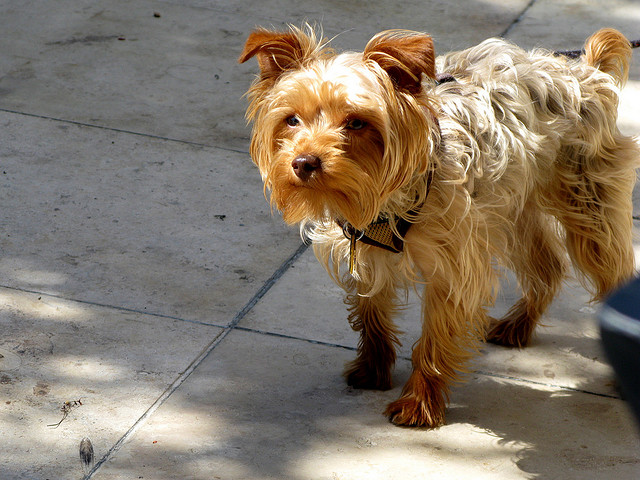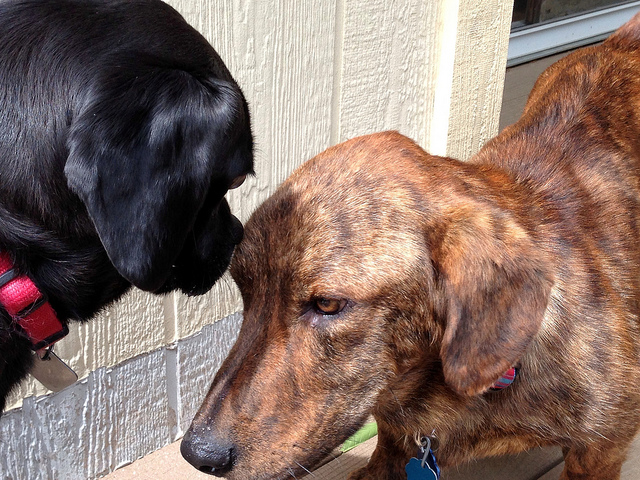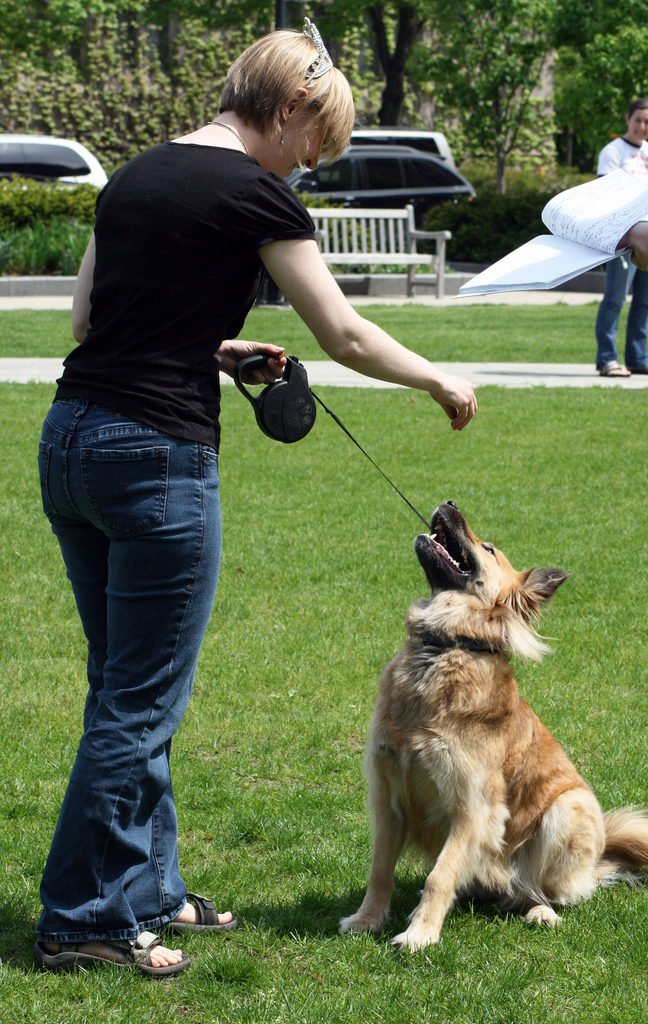The idea of this article actually came from an ex-client of mine (ex because I moved states) who begged me to write an article on a topic that causes her a lot of frustration as the owner of two reactive dogs.
She is not alone, either. Anyone that owns a reactive dog deals with this anytime they go out. And the main reason is because many dog owners don’t realize that they shouldn’t let their dog stare.
What do I mean by “stare”?
A dog should not look at anything intently without shifting his gaze for longer than 3 seconds. After that, it’s staring and in doggy language it’s very rude.

It can be hard for us, as humans, to understand this since most of us feel giving direct eye contact is good. I say “most” because there are some of us (myself included) that do not like to give long, direct eye contact when speaking with someone. I find it uncomfortable.
So does your dog.
And it’s even worse if your dog is reactive. For a reactive dog, it can mean the difference between staying under threshold while a dog passes or having an outburst of lunging, barking, growling, etc.
Why Should You Care?
I know that many people would say it’s the job of the reactive dog’s owner to keep him under control and your dog should be allowed to stare if he wants.
But here’s the thing: If your dog is staring than he too has a behavior issue that needs to be addressed. Staring is a sign of over-alertness, suspicion, guarding and a pre-cursor to a reactive outburst. My reactive dog always stared before he reacted.

The bottom line is – if your dog is staring, he shouldn’t be. It doesn’t matter if he has always been friendly, goes to the dog park every day and is the best behaved dog at the daycare.
Dogs are dogs and just because he has liked every dog he has met up that point, doesn’t mean he won’t find a dog he doesn’t like someday (do you like everyone you meet????).
Also, it’s just good manners to help out your fellow dog owner – remember we are all ambassadors for the dog-loving community and the better behaved our dogs are, the more welcome they will be by the rest of society.
Redirect
Help out those with reactive dogs by being considerate and paying attention to your dog while you are out. If he is staring, redirect his attention.
How do I do that you ask?
The simplest way is to use a treat lure. Put the treat on your dog’s nose (but don’t let him have it!) and lure his head away from what he is staring at and toward you. When his head is pointed toward you, give him the treat. This rewards your dog for turning away from the other dog and looking at you. Give him another treat if he continues to look at you.

You can also remove yourself and your dog by just walking in the other direction.
If you dog has a good “leave it” you can use this, but only if you know your dog will respond. If he has been staring for a while, he may not respond because he is already “over threshold.” This is when a treat lure becomes necessary.
If you need help, find a certified professional dog trainer in your area that has experience with behavior modification.
People Staring
There is one more thing we need to address: people staring. While you may think it’s fine to stare at other humans, dogs do not wish to have you stare at them either. Many reactive dogs will react to a staring human in the same way they would a staring dog.

You may even get bit if you are approaching them to greet. It’s best to never stare at a dog.
Follow these rules and you can help make life easier for dogs (and humans!) everywhere and make sure we dog-loving people continue to be welcome in public.
